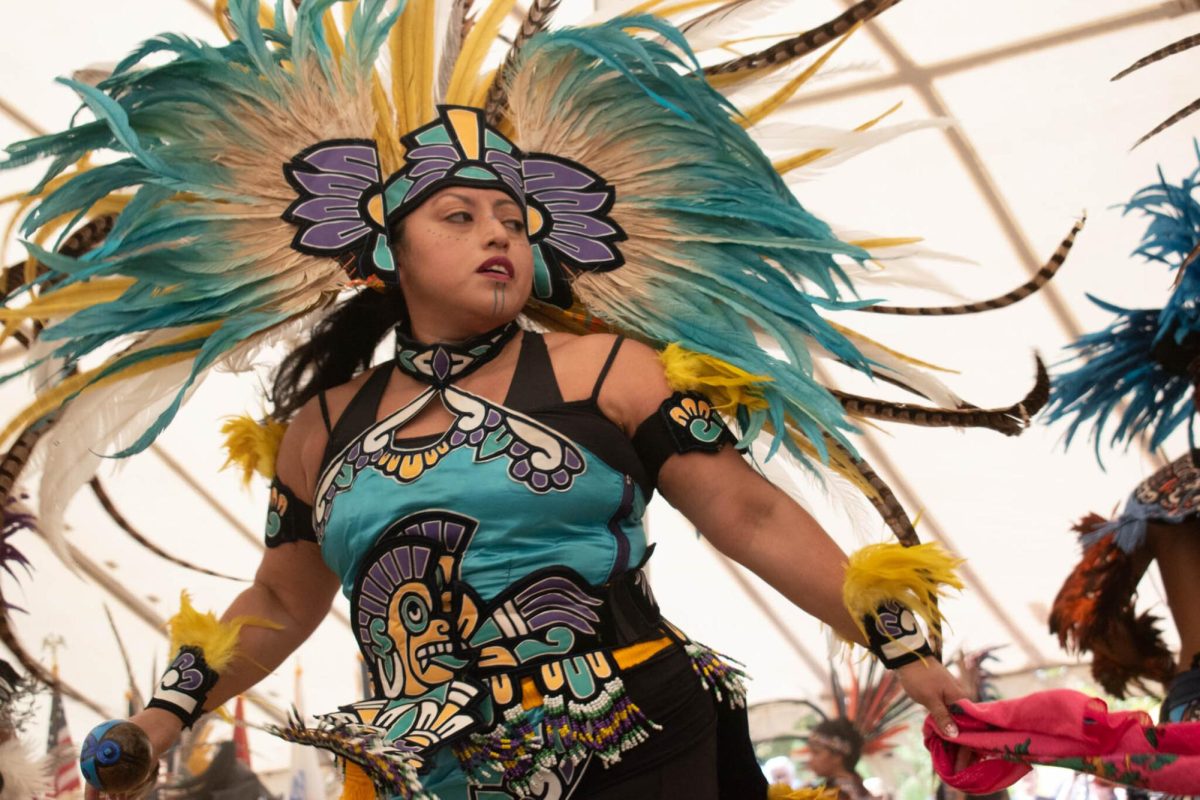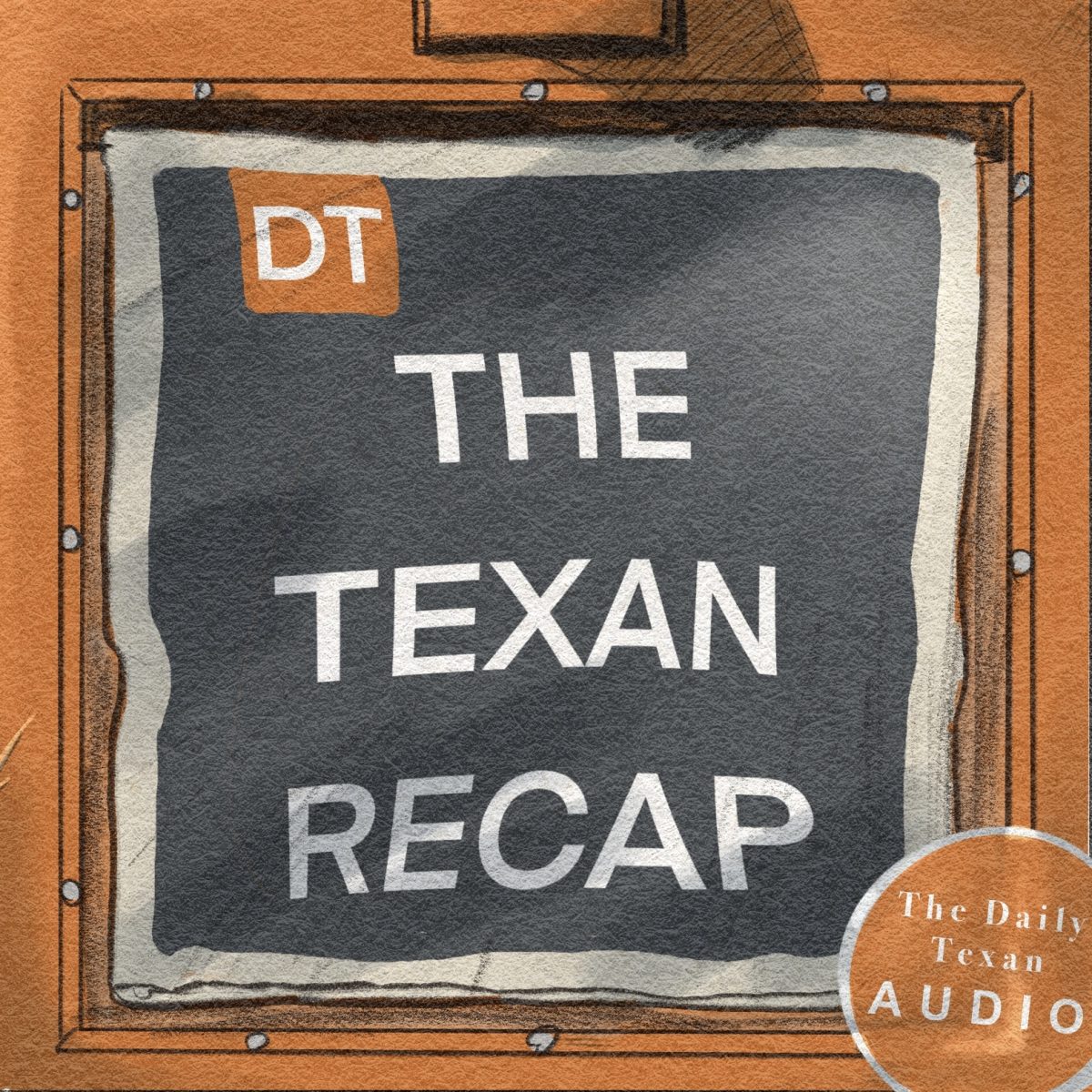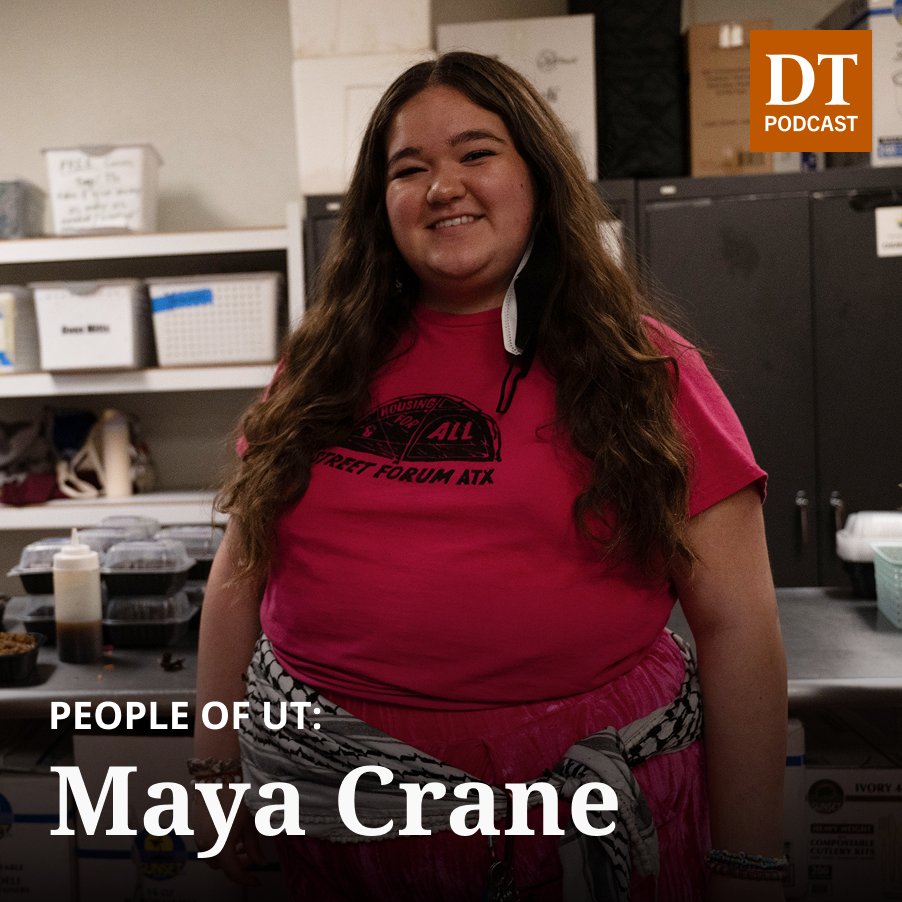*powwow chatter*
Patrick M. Davis: Upon arriving at the Sacred Springs Powwow, it looked a lot like any other Central Texas weekend fair. Vendors were set up around the perimeter of the grounds selling jewelry, commemorative t-shirts, candles, crystals, and a host of other items. Kids nagged their parents for a few dollars so they could buy a funnel cake or some deep-fried Oreos.
*buckskin dance*

Patrick: But as I entered the Arena Tent in the center of the grounds, a different world revealed itself. A thick cloud of earthy sage smoke hung in the air. In the center of the arena, eight men were seated around a large drum. They struck the drum in unison as they chanted soulful songs. Several women danced around the arena, circling the drummers. The long frills of their buckskin dresses swayed, perfectly matching the beat of the drum as hundreds of onlookers watched.
*buckskin dance*
Patrick: This was the buckskin dance, one of several styles featured at the Sacred Springs Powwow on October seventh and eighth. This marked the thirteenth year for the annual event, which is organized by the Indigenous Cultures Institute, or ICI, in San Marcos, Texas.
Powwow dancing is a total sensory experience and has the ability to bring about some intense emotions.
Mia Rangel: The drums are just really clear, and you could hear all the male singers and then there’s like, the female singer, just, right on top of them… it’s just beautiful sounds and melodies. It’s very emotional, almost makes me want to cry.
Patrick: That’s Mia Rangel [rān-hel]. She’s a third-year geography and sustainability major and an officer of UT’s Native American and Indigenous Collective.
Although Mia feels at home connecting with her Indigenous heritage, she’s only been coming to powwows for a few years.
Mia: I was raised as thinking I was Mexican or Hispanic. But um, I grew up to realize that I actually had a lot of indigenous heritage. So I say that I’m of indigenous descent from South Texas and northern Mexico.
Patrick: Mia’s disconnection from her Indigenous roots is not uncommon. The legacy of settler colonialism on this continent casts a long shadow.
Mia: I’ve talked to a lot of elders, especially here in the Indigenous Cultures Institute. And they said that, um, a lot of other people have gone through the same thing. Our culture was taken away from us, a lot of us were killed. And we never had a chance to grow up knowing about our indigenous heritage. So it’s really our duty to reconnect and get into the Native community, in our local area.
Patrick: Providing a venue for people like Mia to rediscover and connect with their Indigenous heritage is a large component of the Sacred Springs Powwow. The ICI is committed to providing cultural programs that nurture that connection. While it was founded by people of Coahuiltecan ancestry, its mission is intertribal.
Aaron Pyle: Powwow is an event that pulls together indigenous people from across the continent. We’re an intertribal event, meaning that we have representatives from Choctaw, Cherokee Chickasaw, Coahuiltecan.
Patrick: UT alumnus Aaron Pyle of the ICI is an expert on Indigenous community-building. In addition to his lived experience as a member of the Choctaw Nation, Aaron’s Philosophy Ph.D. focused on indigenous communities in higher education.
Aaron said the ICI’s mission extends well beyond Central Texas, uniting Indigenous peoples across two continents.
Aaron: The Sacred Springs Powwow, our tagline is “uniting eagle and condor.” And uniting eagle and condor goes back to a prophecy from the 1970s discussing how the Western Hemisphere will begin to heal when we pull together our native people from the north and south. So Eagle represents North America. Condor represents South America. And the big focus of this event is building bridges across native communities.
Patrick: The diversity of dance styles at the Sacred Springs Powwow represents that idea of unity. In addition to Northern dances like the buckskin dance, Mexica Chichimeca, or Aztec Danza, features prominently in the powwow.
*conch sound*

Laura Yohualtlahuiz Rios-Ramirez: My name is Laura Yohualtlahuiz Rios-Ramirez and I’m cihuatlatohki of Kalpulli Ayolopaktzin. Were a group of intertribal families of Anahuaca origins which are origins of this continent prior to borders and prior to colonization.
Patrick: Laura’s title –cihuatlatohki– means she is the chief spokesperson as well as the keeper of knowledge and tradition. Her dance group, Kalpulli Ayolopaktzin, brings together dancers from Austin, San Antonio, and Conroe.
Laura recognizes the importance of the ICI’s intertribal focus. Even though the modern powwow tradition originated in the 1950s, this kind of cultural and material trade is a longstanding tradition.
Laura: Our people have always exchanged ideas, um –concepts, teachings, seeds and goods– you know, and we continue to do that in places like these. And the Sacred Springs Powwow is really special to us because they’re one of the first powwows in Texas that have included the Aztec dance, or the Mexica Chichimeca danza in its programming.
Patrick: Unlike Mia, Laura has known about her Indigenous heritage her entire life. Even though she is a third-generation Aztec dancer, what she calls “the pressure of assimilation” caused her to step away from the practice as a teen. Laura stayed connected to dance through hip-hop and eventually reconnected with Aztec dance later in life.
Although powwow dancers compete for cash prizes, this tradition carries deep significance for people like Laura and the rest of the Kalpulli Ayolopaktzin dancers. Indigenous dance is far more than a hobby or a form of entertainment.
Laura: Everybody has like, a moment where they feel connected to a great spirit or creator god, however you want to call it. And for me dance, you know, the beat, whether it’s like a break beat or a drumbeat, I’ve always felt very, like, just free. I feel the vibration of Mother Earth, moving through me. And it really is like a spiritual practice for me.
*drums beating*
Laura: In that moment, when we’re in the circle with the drumbeats and our relatives, and, you know, you’re just in the zone. It almost feels like time stands still.
Patrick: While powwow and its dance traditions are obviously deeply personal, the atmosphere of such events remains welcoming. Aaron told me that another goal of the Sacred Springs Powwow is to engage with the wider public. Even if you are not part of an Indigenous community, powwows are a great opportunity to learn about Indigenous practices and support Indigenous vendors.
I was nervous myself about engaging in cultural appropriation by attending the powwow, but when I brought this up to Mia Rangel of UT’s Native American and Indigenous Collective, she told me that powwow truly is for everyone.
Mia: It’s a gathering of nations, gathering of different tribes, but of course, if you want to come learn about the culture, see the dances, get some food, buy some jewelry, of course, you can do that. Anyone can come. It’s definitely not cultural appropriation.
Patrick: If you’re interested in connecting with the Native American and Indigenous Collective, you can follow them on Instagram @naic_ut.
Announcer: Dancers, you can go ahead and leave the arena. Ladies and gentlemen, have you ever seen anything more beautiful in your lives? No, I haven’t either.
*drums and other instruments play*
Patrick: This episode was a production of The Daily Texan Audio Department. It was hosted and produced by me, Patrick M. Davis. If you liked this episode, make sure you subscribe to The Daily Texan Podcasts on your streaming platform of choice and follow us on Twitter @texanaudio. Cover art is by Charlotte Keene. Thanks for listening!







